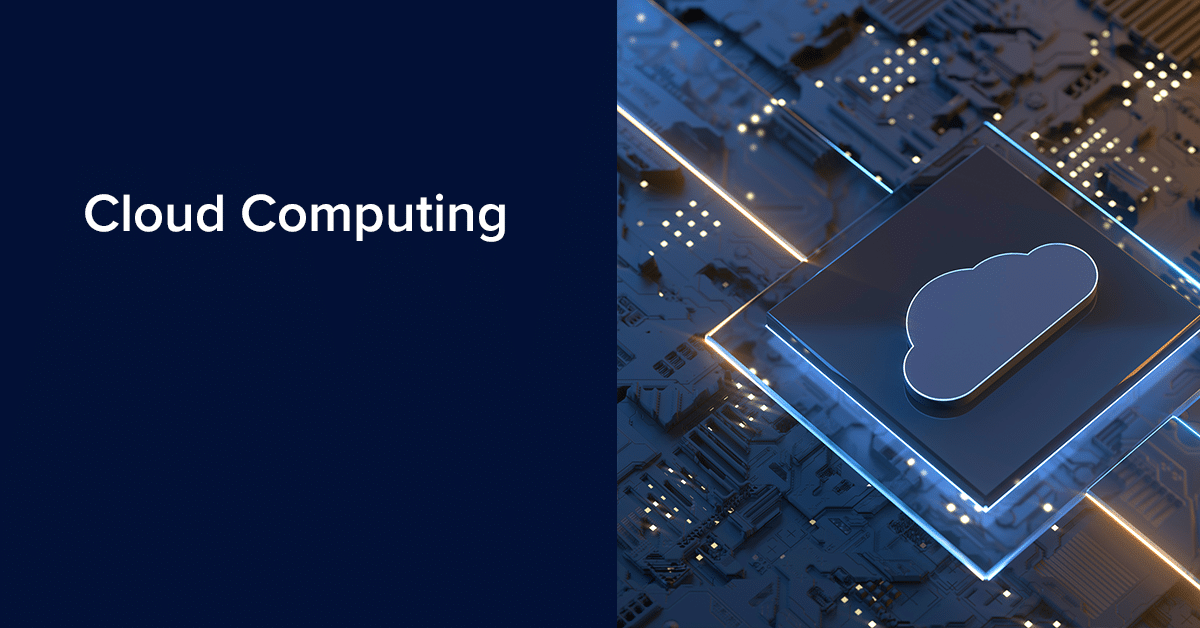Cloud computing is an umbrella (general) term for anything that involves using hosted services on the internet. Typically, cloud services fall into one of three primary categories: IaaS, PaaS, and SaaS. We’ll break those down a little further soon.
The term “cloud computing” comes from the cloud symbol that often represents internet connections in diagrams and flowcharts. A full cloud infrastructure involves all the components required for cloud computing, from SaaS applications to real-time data analytics, and more. Some high-performance cloud platform solutions also come with access to disruptive technology, like AI.
Most of us are using cloud computing every day, even if we don’t realize it. We use online services or cloud applications to make calls, send emails, watch films, share, store and edit documents, play games and even watch TV. Cloud software enables users to access all the features and files they need without having to keep the bulk of them on their own computers.
Cloud platform
A cloud platform can be private or public. While public cloud solutions can offer services to anyone online, private clouds are proprietary data centers or networks that supply hosted services to specific people. Private cloud services come with unique access and permission settings to ensure protection for sensitive data.
Users send their personal data to cloud-hosted servers so they can store their information to access later. These apps are for personal use, however, cloud-based apps are even more useful to businesses as they allow them to access large amounts of data over secure online network connections.
Cloud computing describes services that are hosted over the internet. These services can be divided into three main categories:
- Infrastructure as a service (IaaS)
- Platform as a service (PaaS)
- Software as a service (SaaS)
There’ll be more on those later.
Cloud computing has been around as a term since the 1960s. The cloud metaphor was borrowed from telecoms network schematics, where the public telephone network was represented by a picture of a cloud. This was to illustrate the series of connections making up the network as electronic ‘stuff’ that can’t be seen.
Clouds can be private, public, or a hybrid of both. A public cloud sells services to anyone on the internet, whilst a private cloud is a proprietary data center – or data center, depending on where it is in the world – that supplies hosted services to specific people – setting access and permissions for them.
Whichever type of cloud computing is used, its aim is to provide simple yet scalable access to computing resources, IT and telephony services.
How does cloud computing work?
When it comes to understanding cloud computing it can be useful to examine it in terms of two interfaces. Those are the front-end and backend of the computing system. The front-end of the system lets users access cloud-stored data via internet web browsers or cloud computing apps.
Main component of cloud computing
The main component of cloud computing, however, is related to the backend. This is the aspect of the system that’s responsible for the functionality that allows the storage of data and information.
The backend is made up of servers – including central servers, databases, and computers.
The central server uses ‘middleware’, a type of software that ensures seamless connections between the devices linked by cloud computing. Cloud providers generally keep multiple copies of data to mitigate the risk of security breaches and data loss.
Rather than buying and running their own IT infrastructure or data centers, companies can hire out access to resources – including applications and storage – from cloud service providers.
This means they can avoid the upfront costs and complexities of having to buy and manage operations in-house. They can simply pay for what they need as required from the cloud computing provider.
Uses of cloud computing
You are probably using cloud computing right now, even if you don’t realise it. If you use an online service to send email, edit documents, watch movies or TV, listen to music, play games or store pictures and other files, it is likely that cloud computing is making it all possible behind the scenes. The first cloud computing services are barely a decade old, but already a variety of organizations—from tiny startups to global corporations, government agencies to non-profits—are embracing the technology for all sorts of reasons.
Here are a few examples of what is possible today with cloud services from a cloud provider:
Create cloud-native applications
Quickly build, deploy and scale applications—web, mobile and API. Take advantage of cloud-native technologies and approaches, such as containers, Kubernetes, microservices architecture, API-driven communication and DevOps.
Test and build applications
Reduce application development cost and time by using cloud infrastructures that can easily be scaled up or down.
Store, back up and recover data
Protect your data more cost-efficiently—and at massive scale—by transferring your data over the Internet to an offsite cloud storage system that is accessible from any location and any device.
Analyze data
Unify your data across teams, divisions and locations in the cloud. Then use cloud services, such as machine learning and artificial intelligence, to uncover insights for more informed decisions.
Stream audio and video
Connect with your audience anywhere, anytime, on any device with high-definition video and audio with global distribution.
Embed intelligence
Use intelligent models to help engage customers and provide valuable insights from the data captured.
Deliver software on demand
Also known as software as a service (SaaS), on-demand software lets you offer the latest software versions and updates around to customers—anytime they need, anywhere they




